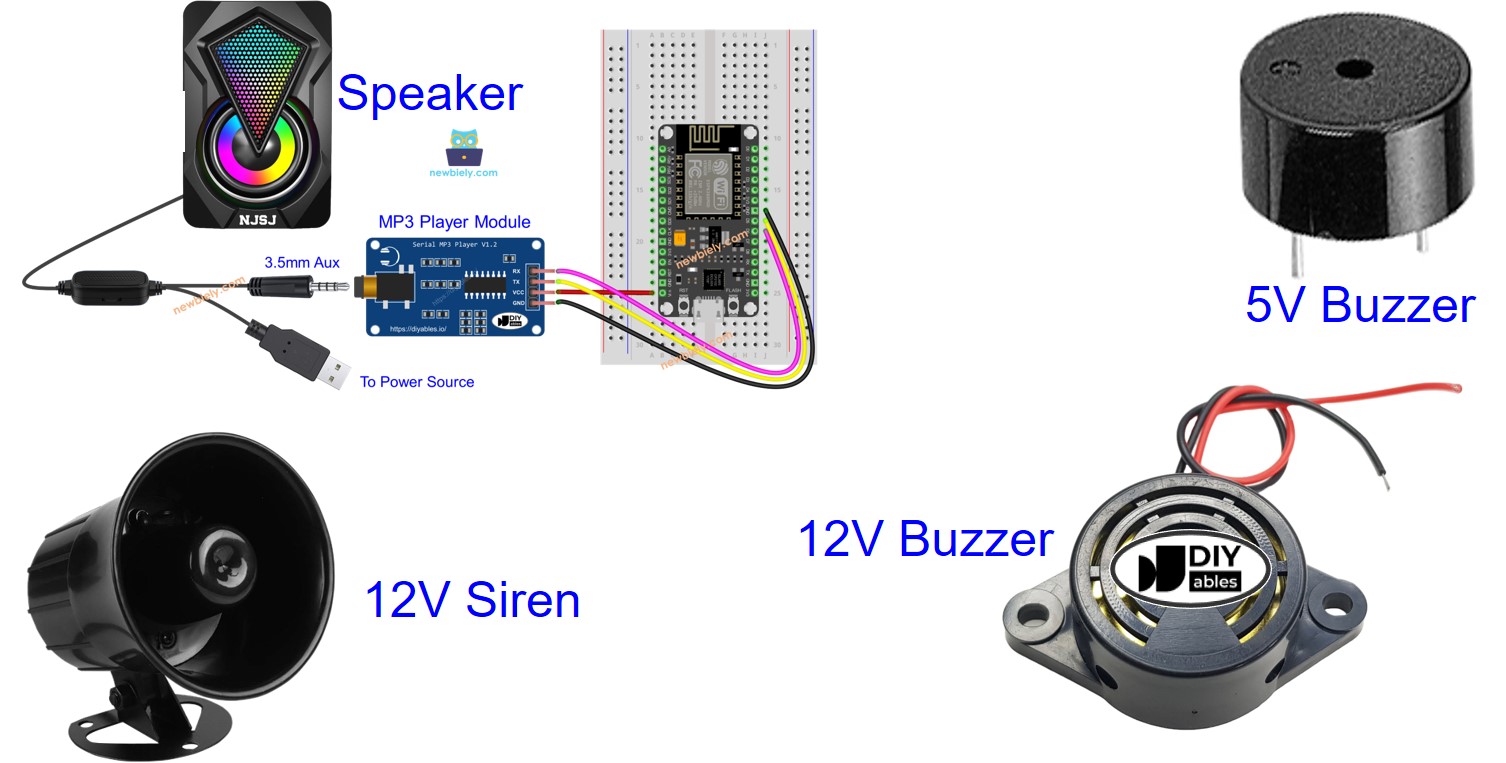ESP8266 - Audio
This tutorial instructs you how to use ESP8266 to generate audio sound. In detail, we will learn:
- How to program ESP8266 to generate a small beep sound
- How to program ESP8266 to generate a loud sound
- How to program ESP8266 to generate a warning sound
- How to program ESP8266 to play a recorded sound

Hardware Preparation
Or you can buy the following kits:
| 1 | × | DIYables Sensor Kit (30 sensors/displays) | |
| 1 | × | DIYables Sensor Kit (18 sensors/displays) |
Disclosure: Some of the links provided in this section are Amazon affiliate links. We may receive a commission for any purchases made through these links at no additional cost to you.
Additionally, some of these links are for products from our own brand, DIYables .
Additionally, some of these links are for products from our own brand, DIYables .
Overview of ESP8266 and Audio
There are several ways to make ESP8266 generate sound. Depending on your application, you can choose one of the following methods to make sound using ESP8266:
- If you need a small beep as sound indicator like keypad beep, you can use 5V buzzer, you can learn more in ESP8266 - Piezo Buzzer tutorial
- If you need a loud sound for alarming, you can use 12V buzzer, you can learn more in ESP8266 - 12V Buzzer tutorial
- If you need a warning sound, you can use Siren or horn, you can learn more in ESP8266 - Siren Horn tutorial
- If you need to play a recorded audio file, you can use MP3 player and speaker, you can learn more in ESP8266 - MP3 Player tutorial
